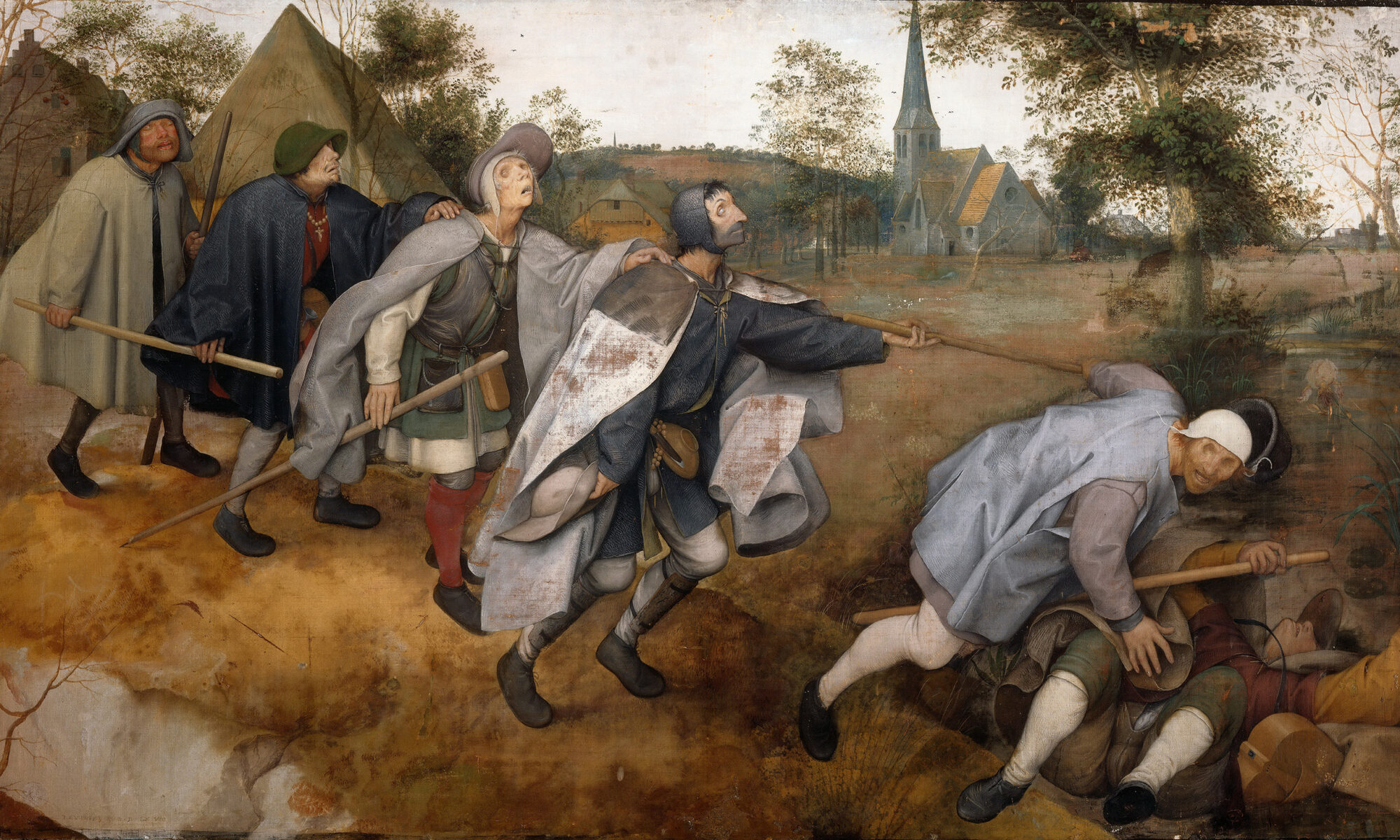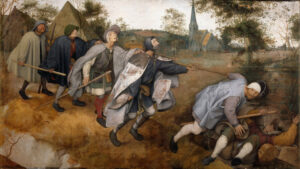
Narrative painting is more difficult than painting a simple still-life-one needs to be able to tell a story with one’s brush.
What is a narrative painting?
Stories have a beginning, middle, or end, but a painting is by design a portrait of a moment in time. That requires sleight of hand. We either must tell a story with which everyone is familiar, as in Leonardo da Vinci’s The Last Supper, or one in which the story can be reasoned out, like Ford Madox Brown‘s The Last of England.
The genre paintings of Pieter Brueghel the Elder illustrate moral truths. These aren’t portraits, although they might have used known models. The figures are meant to be generic. This kind of painting reached its peak with social realism in the 19th century, with paintings like Ilya Repin‘s Barge Haulers on the Volga.
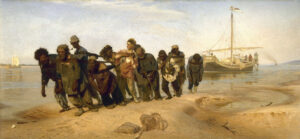
Narrative is an elastic category. I think everything Caspar David Friedrich ever painted could be classified as narrative. Others might see just Romantic landscapes.
When Gustave Courbet painted everyday scenes on large canvases, the scale itself was part of the story. He was saying that the common man was of equal importance to the elite, setting the traditional hierarchy of genres on its head.
However, some implied action is necessary. I wouldn’t classify my own Wreck of the SS Ethie as a narrative painting, even though it depicts the result of an historic storm. On the other hand, I’d say my Breaking Storm is. It’s taking you out of danger and into the light.
Human figures are not necessary in narrative painting. A cell phone abandoned next to a half-eaten meal might tell a story. Likewise, landscape tells stories. Melting snow, for example, has the before-and-after elements of story.
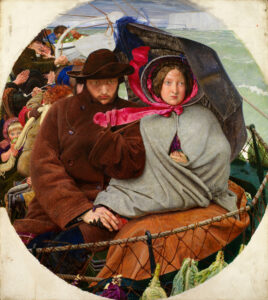
How does narrative differ from subject?
A figurative painting must have a subject but can have no narrative at all. In fact, most paintings fall into this category, even when the subject has deep meaning, as in Jean-Auguste-Dominique Ingres‘s incredible Napoleon I on His Imperial Throne. The subject can be a person, place, or object, with or without symbolic significance, historical context, or cultural references.
There’s nothing wrong with paintings without these deep layers. Although Édouard Manet is famous for meaning- and narrative-drenched large canvases of social and political importance, some of his finest works are the tiny still lives he did from his sick bed at the end of his life.
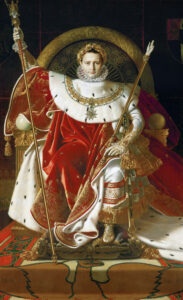
How does symbolism fit in?
Symbols and visual metaphors convey meaning. Some of them are almost universal, such as blue restroom signs. But much symbolism is culturally-specific, like those ‘language of flowers’ messages of the 19th century. Still, a thoughtful artist can think up symbols that transcend time and place. These may not be blindingly obvious, but if they arise in the context of mapping out your painting, they’re bound to have more staying power. Ultimately, symbols should express emotion, thought and intention.
The meaning of meaning
The meaning in a painting is a close dance between the artist’s intention and the viewer’s perception. Essentially, it’s what boils down in the stew of narrative, subject and symbolism. Meaning is contextual; how we read Napoleon I on his Imperial Throne today is far different from when Ingres painted him at the height of his power.
Above all, each viewer brings their own experiences, perspectives, and emotions to a painting. In addition to Ingres’ technical mastery, I see the deep frivolity of wrapping a deeply-flawed man in the symbols of Christ’s earthly reign. Others, from a different background, will see different things.
Meaning is not always straightforward or easily decipherable, nor should it be. Great art leaves room for interpretation and invite viewers to engage with their work in a personal and subjective manner. The beauty of art lies in its ability to provoke thought and emotion and spark meaningful conversations, allowing each of us to find our own messages within.
Reserve your spot now for a workshop in 2025:
- Advanced Plein Air Painting, Rockport, ME, July 7-11, 2025.
- Sea and Sky at Acadia National Park, August 3-8, 2025.
- Find Your Authentic Voice in Plein Air, Berkshires, MA, August 11-15, 2025.
- Immersive In-Person Fall Workshop, Rockport, ME, October 6-10, 2025.

